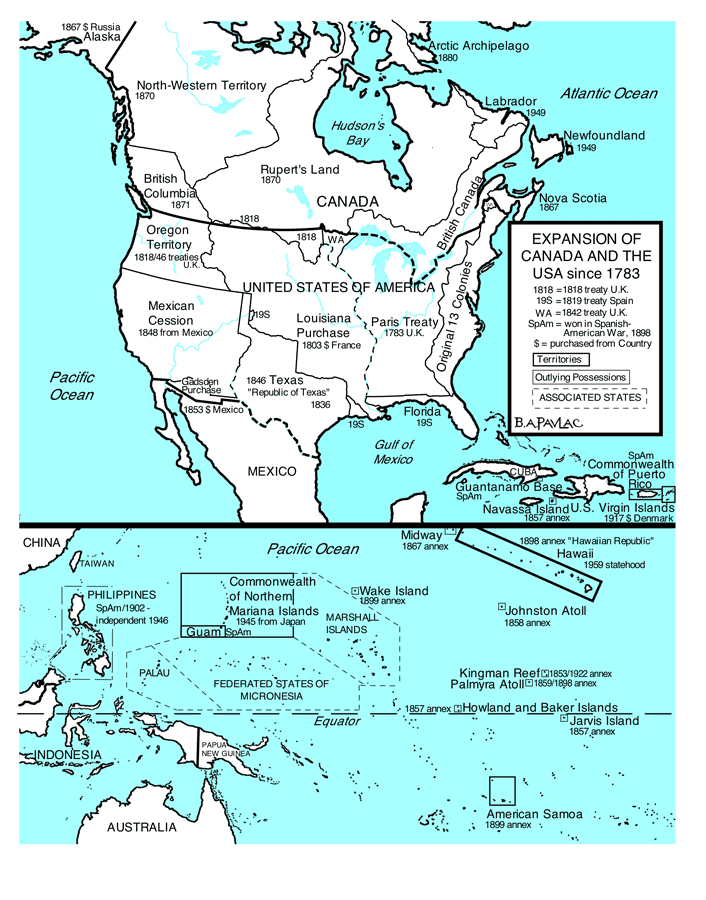The United States at first expanded officially through various treaties with other European powers. Such treaties sometimes followed diplomacy and payment, other times wars.
Many people are unaware of the American presence in the Pacific. The Outlying Possessions were usually uninhabited islands claimed for mining guano in the mid-1800s. Today most have become nature preserves. The swift victory in the Spanish-American War of 1898 won an number of new possessions in the Pacific and Caribbean. The largest, the Philippines, was only secured after US forces brutally crushed a native rebellion. The country was allowed independence after World War II and long remained a client state supporting US military bases.. The Associated States (Marshall Islands, Palau, Federated States of Micronesia) started similar to protectorates. The United States took them under supervision after World War II and sanctioned by the United Nations. Today they are technically sovereign, but defense and various social services are provided by the United States government.
The United States twice tried to conquer British Canada (during the Revolutionary Wat and the War of 1812). Canada became a self-governing Dominion in 1867. Its absorption of various territories (most of which would become provinces) is dated according to their turnover by the United Kingdom. Today's provincial borders.
Both the United Kingdom/Canada and the United States (and France, the Netherlands, and Spain) also had to engage in diplomacy, payment, and war with the native (indigenous) inhabitants, usually called Indians in the United States and First Nations people in Canada. The original natives, of course, wound up with the worst land and continue to suffer discrimination.


